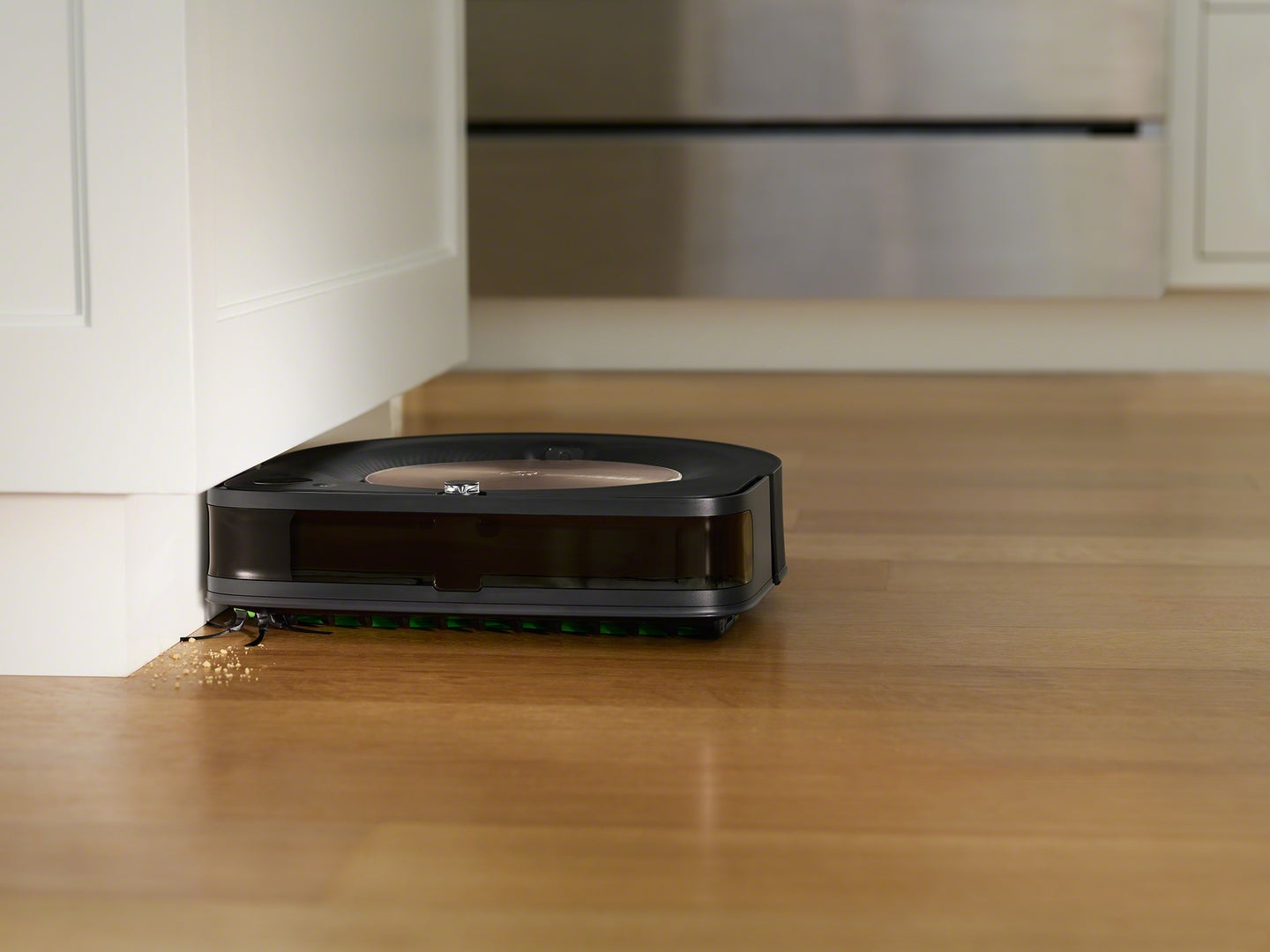Roomba’s new flagship robot is an expensive way to clean your home’s corners
It only costs $1,300.

We may earn revenue from the products available on this page and participate in affiliate programs. Learn more ›
Last year, the company that makes Roombas announced their latest floor-cleaning robot. Called the i7, the bot’s marquee feature was the ability to learn the layout of your home, remember that house-scape, and then clean specific rooms on command. But that kind of intelligence, plus a base station that automatically sucks the dirt out of the Roomba, comes at a price: $1,100.
But today iRobot announced an even pricier model, called the S9, that costs $1,300. (It goes for $1,000 without the self-cleaning base station.) When I asked iRobot’s CEO, Colin Angle, how this newest cleaning machine compares to the i7—I referred to the i7 as the “Cadillac of Roombas” when phrasing the question—he called the s9 “the Hummer.”
Part of what justifies that Hummer nickname is its ability to suck more powerfully than previous, older Roombas—it has four times the suction of the i7. Another is that it’s better sealed, to keep allergens inside of it, as opposed to kicked up in the air when it vacuums. But the most interesting feature is its ability to get super close to walls, cope with corners, and deal with clutter. And for that, iRobot added a new sensor to the front of the machine.
With the s9, that sensor is detecting the three-dimensional space in front of the Roomba as it moves forward. “It’s essentially scanning a volumetric space that’s roughly equivalent to the size of the robot,” says Brent Hild, a senior product manager at iRobot. It’s scanning that space using two planes of infrared light that project in front of it, with one plane higher than the other and both parallel to the floor. Those planes of infrared light bounce off the objects in front of the Roomba, allowing the sensor to know its distance from it. Thanks to those two lights planes, the robot can see anything ranging from about the size of a centimeter and up, Hild says.
That new form of perception helps the robot do two things. “It’s edge and corner cleaning, which is one of the core problems we’re trying to solve with this particular robot design,” Hild says, “and also just navigation through more cluttered environments.”
The addition of the sensor is a good reminder that tech products that have been around for years typically improve iteratively. That iteration can happen thanks to software improvements, but sometimes a machine or gadgets needs hardware tweaks, or better sensors, to perceive its environment in some way. A self-driving car requires cameras, radar units, and lasers to know what’s around it. Your iPhone needed new sensors to see you for Face ID. The latest MacBook Air has a fingerprint reader. You want a new feature to improve your already good product? That might mean adding a sensor.
The three-dimensional sensor on the front of the newest Roomba is not the only way it can perceive the dusty world it lives in. Like the i7, the s9 sports an optical sensor on the top, which uses the light and dark patterns in your home to figure out where it is, like a sailor looking up at constellations. Both robots also have other navigational sensors, including “hall sensors,” Hild says, that detect when your Roomba has bumped into a wall.
Besides sensors that help it navigate, these robots also have a sensor that “listens for dirt,” Hild says—like the “chatter” that sand makes when it’s sucked up. When it hears a lot of dirt, it can figure out that it’s in a spot that it needs to spend more time cleaning. The dust bin also has yet another infrared sensor in it that can tell if the bit is full; it can also see if a lot of stuff that doesn’t happen to be noisy—like dog hair, which wouldn’t make a chatter sound—is coming in, to again let the Roomba know to focus more on that filthier spot.
Finally, the newest Roomba also has a new shape: the front is flat, with rounded corners at the edges, and a circular back. That new design also makes it more corner-friendly.
